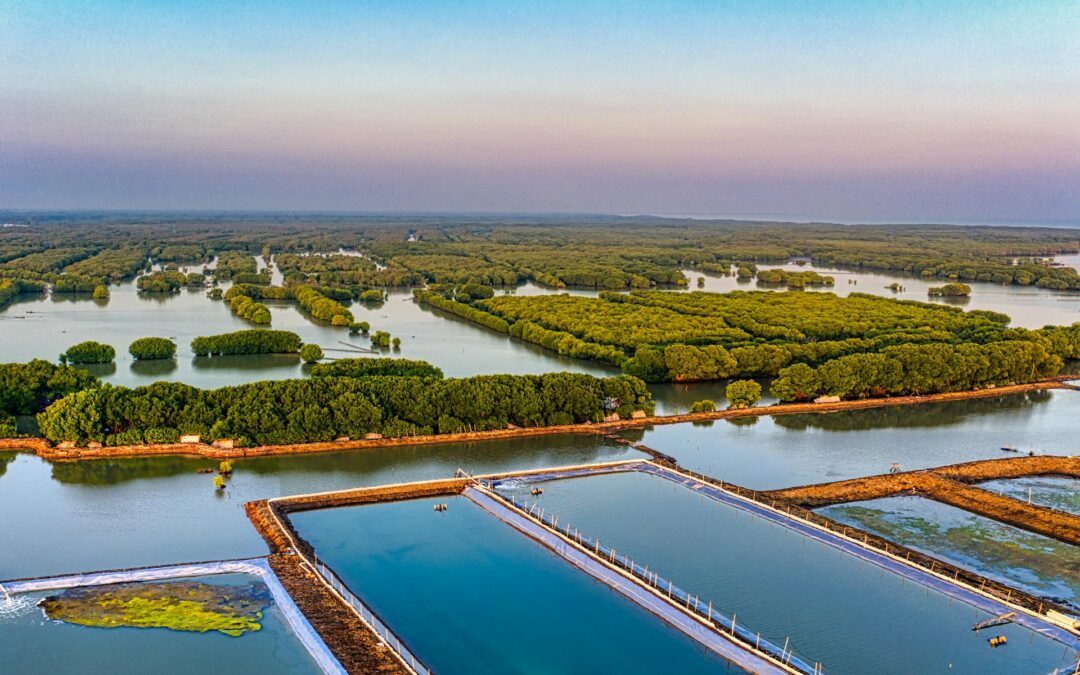Most Middle Eastern countries are forced to rely heavily on foreign imports in order to meet food demand. However, supply chain disruptions and geopolitical tensions in various parts of the world have left nations reliant on food imports vulnerable, particularly those within the GCC area.
The Middle East is one of the most challenging regions globally for farmers. In this part of the world, a lack of water, feed resources, and arable land combined with the harsh arid climate hinder farmers’ ability to produce fresh fruits and vegetables of a high standard. To counter this, many Middle Eastern nations are turning to technological innovations to improve yields and quality, minimize water consumption, and ward off pests and diseases, making food supplies more reliable. Precision agriculture leverages data and technology to ensure both crops and the soil they grow in receive the nutrients they need for maximum productivity and health. Predictive analytics can also provide farmers with real-time data, informing crop rotation decisions and predicting the best times to plant and harvest crops.
Increasing demand for fish and seafood
Driven by the region’s increasing demand for fish and seafood, aquaculture has been gaining momentum in the Middle East in recent years. Offering game-changing potential in terms of boosting food security while simultaneously alleviating pressure on wild fish stocks, aquaculture practices are already being used to produce popular species in several Middle Eastern countries.
In Saudi Arabia, a joint venture was announced in February 2024 between the Saudi Arabian development organization Tabuk Fisheries Company, a fish farming business, and NEOM. Trading as Topian Aquaculture, the new venture includes plans to create the largest hatchery in the Middle East, a facility with a planned capacity of 42 million fingerlings, as well as marine-pen production facilities, producing 20,000 tons of fresh fish annually. Tabuk Fisheries Company Chairman Nasser A. Al-Sharif said he was excited to bring the joint venture to fruition, highlighting its vast potential to bring high-quality marine fish to market through the adoption and implementation of next generation technologies.
Tuna a popular protein source in the Middle East
As in many other parts of the world, tuna is a popular protein source in the Middle East, particularly in the Arabian Gulf region. Yellowfin and bluefin tuna are the primary tuna species of interest due to their high market value. Tuna aquaculture typically requires advanced technology and expertise, involving the use of large offshore cages.
Native to the Nile River and several other African freshwater bodies, Nile perch has been successfully reintroduced and farmed in several parts of the Middle East, particularly nations that border the Red Sea. Nile perch aquaculture is rapidly gaining traction in countries like Sudan and Egypt, where the fish’s firm flesh and large size appeal to domestic markets.
One of the most popular fish species in the MENA region, tilapia is capable of adapting to a range of environmental conditions. Its mild taste and rapid growth rate make the species an ideal candidate for aquaculture. Today in Oman, Egypt, and Saudi Arabia, tilapia is raised in freshwater ponds and reservoirs.
Whiteleg shrimp has skyrocked in popularity
The popularity of species like whiteleg shrimp has skyrocketed in recent years, particularly in Saudi Arabia and the United Arab Emirates. Catering to both domestic consumption and export modes, intensive shrimp farming operations are being established in coastal areas and inland ponds.
In Dubai, Fish Farms LLC includes RAS facilities, a hatchery, and cage farms. This ambitious aquaculture project has lived up to the hype by significantly reducing reliance on seafood imports across the UAE. Established in early 2013, Fish Farms LLC pioneered the Middle Eastern fish farming industry, introducing aquaculture to Dubai. Led by CEO Bader bin Mubarak, a business leader with a long track record in various marine industries, the company is based in Dubai and operates a state-of-the-art hatchery in Umm al-Quwain, as well as a unique recirculating aquaculture system in Jebel Ali, and cage farms in Dubai and Dibba. In 2022, the company produced 6 million fingerlings of various fish species, producing around 2,500 tons of farmed fish. The majority of its production was European seabream produced in cages in the Indian Ocean and Gulf of Oman.
Meanwhile in Egypt, Ghalion ranks as the Middle East’s largest fish farm, as well as one of the largest aquaculture projects in the world. Inaugurated by President Abdel Fattah El-Sisi in November 2017, the fish farm cost EGP $14 billion to construct and includes a fish and shrimp hatchery, intensive farming units, and several factories.
In the realm of aquaculture, though the industry remains in its relative infancy in the Middle East, in recent years many GCC countries have invested heavily in the sector, as well as providing attractive incentives to invite foreign and local investment. In addition to relaxing institutional and investment constraints, many Middle Eastern countries are striving to create aquaculture frameworks and mapping out suitable sites for development, with many new fish farming projects in the pipeline across the MENA region.

